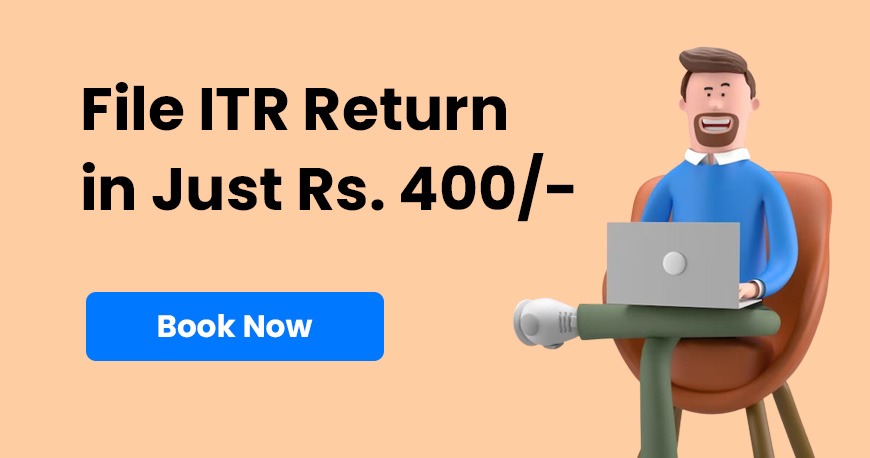How to handle GST Scrutiny/Assessments with a practical approach?
The department is now better prepared to identify any mistakes or omissions in GST returns, which may have a big impact on which GSTINs are chosen for inspection, investigation, or audits.
It is a well-known fact that in the initial months of GST implementation, there was a higher incidence of incorrect data in returns compared to later periods.
This was largely due to the complexities & confusing nature of the GST rollout. However, it is now possible to rectify any erroneous information that was entered in GST returns.
Due to the complexities, confusion, and potential for errors in the GST system, many taxpayers are understandably apprehensive about undergoing assessment.
This is why they may feel anxious whenever they receive any communication from the tax authorities or department. In particular, when dealers are informed that their GSTIN has been selected for scrutiny, it is likely that many will experience a sense of panic.
It is worth noting that selecting a GSTIN for scrutiny is not a manual process carried out by the tax department. Instead, it relies on sophisticated tools such as "Advance Analytics in Indirect Taxes" (ADVAIT) or "Business Intelligence and Fraud Analysis" (BIFA).
The department is now better equipped to detect any errors or omissions in GST returns, which can significantly influence the selection of GSTINs for scrutiny, investigation, or audits.
This article is focused on teaching you more about the practical approach to handling GST scrutiny & assessment. Read on to discover the ways for handling the GST assessment/scrutiny with relevant documents and information.
ads1
Type of Assessment Under GST Act
Self-Assessment:
Section 59 of the CGST Act mandates that all registered persons must file returns under Section 39, after performing a self-assessment of their GST liability as per the legal provisions and disclosing the invoiced amounts. In simpler terms, self-assessment refers to the process of evaluation carried out by the registered person themselves, as opposed to an assessment conducted by the proper officer. Therefore, the following key points should be considered when it comes to self-assessment.
- Self-Assessment applies only to the registered person.
- Self-Assessment is to be done by every registered person.
- Section 39 of the CGST Act requires that tax returns must be filed for every tax period.
- Self-Assessment means an assessment done by the taxpayer himself.
ads2
Provisional Assessment:
f a supplier is unable to determine the value of goods or services or both, or determine the applicable tax rate, they may submit a written request to the Assistant Commissioner or Deputy Commissioner of Central Tax for payment of tax on a provisional basis, along with a justification for such payment.
Below is the process of Provisional Assessment
Here are some key practical tips to keep in mind when responding to any notices that you receive.
- When an assessee is no sure of the “value of goods or services or rated tax” then the provisional assessment can be restored.
- After this, the assessee will be required to request of tax payment on provisional basis to the proper officer by determining the reason of such payement.
- Proper officer need then to furnish notice using form ASMT-02 & the assessee will store a reply using form GST ASMT-04
- The proper officer is required to issue an order in Form ASMT-04 within 90 days of receiving a request from the assessee for provisional payment of taxes. This order should include details of the rate of tax and the value of supply.
- The taxpayer is required to submit a bond in Form GST ASMT-05 or pay the differential amount between provisional and final tax, along with security or surety, as prescribed, and pay the provisional tax. The security amount should not exceed 25% of the bond amount and must be provided in the form of a bank guarantee. Proper officer (PO) may also call for the details in form ASMT-06.
- The proper officer is required to finalize the assessment within six months from the date of the provisional assessment order and issue a final assessment order in Form ASMT-07. However, this period of six months can be extended by the Joint Commissioner or Commissioner for a further period not exceeding six months, provided there are valid reasons for such extension.
- When the assessment is done, the assessee can now proceed to file an application to release the bond in Form ASMT-08
- Within 7 working days of receiving Form GST ASMT-08, the proper officer will confirm that the due taxes have been paid and then issue an order for releasing the bond in Form GST ASMT-09 and release the bond.
- In case the final tax liability is more than the provisional tax paid, the assessee will be required to pay interest at the prescribed rate from the next day of payment until the actual date of payment. If the final tax liability is less than the provisional tax paid, the assessee can apply for a refund and will be entitled to interest under section 56, from the 61st day of the refund claim application until the date of refund.
ads3
Scrutiny of Returns:
The procedure followed by the proper officer, as per the CGST Act, 2017, involves scrutinizing the return and related particulars provided by the registered person to ensure their accuracy and notifying the person of any discrepancies noticed.
Here are some important points to be noted upon receipt of a clarification notice in Form ASMT-10:
- Receiving notice in ASMT-10 should not cause any panic as it is an informative notice regarding discrepancies and no demanding order will be issued solely based on this notice.
- If the discrepancies mentioned in the notice are correct, the registered person may choose to accept them and proceed to pay the tax, interest, and any other amount resulting from such discrepancies.
- If the registered person does not accept the discrepancies mentioned in the notice, they can submit a detailed reply against ASMT-10 on the GST online portal in Form ASMT-11 to avoid the some proceedings.
Note: The GST Act does not provide a specific timeline for issuing a satisfactory order in Form ASMT-12, and as a result, in most cases, the department does not issue such an order. This can be observed from the status available on the portal after filing a reply in Form ASMT-11, which shows "reply submitted pending for order."
Best judgement assessment in case of unregistered persons
If the person fails to submit the returns u/s 39 or 45 even post the service of a notice u/s section 46, then a proper officer will be appointed to proceed the assessment of the tax liability of the given person to the best of his/her judgement taking into account the all the material available or which s/he has collected and provide an assessment order in form GST ASMT-13.
Note: If a registered person submits a valid return within 30 days after receiving an assessment order under sub-section (1), the assessment order will be considered withdrawn. However, the person will still be liable to pay interest or late fees, if applicable.
Best judgement assessment in case of unregistered persons
If a taxable person fails to register even though they are liable to do so, or if their registration is cancelled under sub-section (2) of section 29 but they were liable to pay tax, the proper officer may assess the tax liability of such a taxable person for the relevant tax period to the best of their judgement, and issue an assessment order in Form GST ASMT-15.
Summary Assessment:
The tax authority can evaluate the tax obligation of an individual based on any proof indicating a tax liability, with the prior approval of an additional commissioner or joint commissioner.
ads3
Type of Descripencies
1. GSTR-1 vs GSTR-3B
Step to Reply;
As a first step, it is important to compare the value mentioned on the notice with the actual value reported in GSTR 1 and GSTR 3B. To do this, you can use the comparative liability feature available on the GST portal (by logging in, navigating to "Service," then "Returns," then "Tax Liabilities and ITC Comparison," and selecting the relevant period).
If there are any discrepancies, you can explain in your reply that there is no difference between the liability reported in GSTR 1 and the liability disclosed in GSTR 3B, as per the comparative liability feature on the GST portal. You may attach a screenshot of the comparative liability as an annexure to support your response.
Following are the actions to be taken in case of any discrepancies
- If the notice indicates that there is additional tax due as per GSTR 3B, the dealer should verify whether they have actually made the additional payment. In response, they can state that the additional tax has been paid in GSTR 3B and has either already been adjusted in a subsequent period (the status of which should be checked), or will be adjusted in a subsequent period.
- If the notice indicates that there is a shortfall in tax payment as per GSTR 1, the dealer should first review their previous year's GSTR 1 and GSTR 3B to determine whether they have paid any excess tax in the past.
- This may have resulted in a short payment in the current period, as the earlier excess payment should have been adjusted against the current period's liability.
- The dealer can use the comparative liability feature on the GST portal (by logging in, navigating to "Service," then "Returns," then "Tax Liabilities and ITC Comparison," and selecting the relevant period) to better understand the situation.
- Additionally, they should check whether any additional tax has been paid using the DRC-03 challan.
- If the dealer finds that the notice's claim of a short payment of tax liability is correct, they should make the additional tax liability payment along with an 18% interest using the DRC-03 challan. They should also submit the challan and a reply to the department.
Type of Descripencies
2. Output tax in GSTR3B vs Form 9
Steps to reply:
- Verify the total liability as reported in Table 9 and compare it to the total payment made. If the total payment made is less than the total liability, check the previous year's Form 9 to see if any excess payment was adjusted in the current period.
- Verify whether the additional liability has been paid in the subsequent year's GSTR 3B or if the additional tax has been paid through the DRC-03 challan.
Type of Descripencies
3. Between ITC as per ITC vs GSTR3B as per 2A/2B
Steps to reply:
- Verify the financial year of the notice, as GSTR 2A was not accessible in October 2018. The legal principle of "Lex non cogit impossibilia" states that the law cannot require a person to do something that is impossible. Thus, requesting someone to reconcile the form for July 2017, which was only visible in October 2018, is unfeasible.
- Check the comparative ITC available on the GST portal by following the steps: Login to the GST portal, select "Service", then select "Returns", then select "Tax Liabilities and ITC Comparison", and finally select the relevant period. Once you have checked the comparative ITC, take the necessary action mentioned as follows:
– If the ITC available in GSTR 2A/2B is lower than the ITC claimed in GSTR 3B, examine the variance with the ITC claimed in the current year for the documents related to the previous financial year and respond that the discrepancy is due to the ITC related to the previous financial year that has been claimed in the current financial year. Some details of the invoice, where the ITC has been claimed in the current financial year, are attached as annexure and marked as.
– In case the ITC appearing in GSTR 2A/2B exceeds the ITC availed in GSTR 3B, you may respond stating that the ITC as per GSTR 2A/2B is higher than the ITC availed in GSTR 3B, and hence the proceedings should be dropped on this ground alone.
ads4
- If the previous steps are not effective, compare the invoice-wise ITC as per GSTR 3B with that of GSTR 2A/2B and submit a reply accordingly.
Essential Points to remember
To handle situations such as assessment, investigations, and audits, it is important to keep relevant evidence and provide clear explanations.
- Make sure to verify the tax rates and corresponding HSN codes used by your competitors.
- Pay attention to the HSN/SAC classification, especially when the same code is applied to items with different tax rates.
- Be aware that certain goods or services are blocked from availing Input Tax Credit (ITC) under the GST Act, and ensure that you have not claimed ITC on such items as health and fitness center, gifts, goods lost, inward supplies user for personal consumption, composition taxpayer, food & beverage, tax paid in fraud, self-construction of immovable property, etc:
Also, Read: "Statutory & Compliance Calendar For May 2023".
FILING YOUR INCOME TAX RETURN F.Y 2022-23 (A.Y. 2023-2024) WITH MYITRONLINE
Income tax filing deadline is right around the corner. If you haven’t filed yet, do it now for FREE on Myitronline! Avoid last minute rush and file your tax return today on MYITRONLINE in Just 5 mins.(www.myitronline.com)
If you are looking for eCA assistance to file your income tax return/ GST, you can opt for MYITRONLINE eCA assisted plan starting
Upload Salary Individual Form-16
If you have any questions with filing your tax return, please reply to this mail. info@myitronline.com OR call 9971055886.
Note-All the aforementioned information in the article is taken from authentic resources and has been published after moderation. Any change in the information other than fact must be believed as a human error. For queries mail us at marketing@myitronline.com
Krishna Gopal Varshney
An editor at MyitronlinenewsKrishna Gopal Varshney, Founder & CEO of Myitronline Global Services Private Limited at Delhi. A dedicated and tireless Expert Service Provider for the clients seeking tax filing assistance and all other essential requirements associated with Business/Professional establishment. Connect to us and let us give the Best Support to make you a Success. Visit our website for latest Business News and IT Updates.









